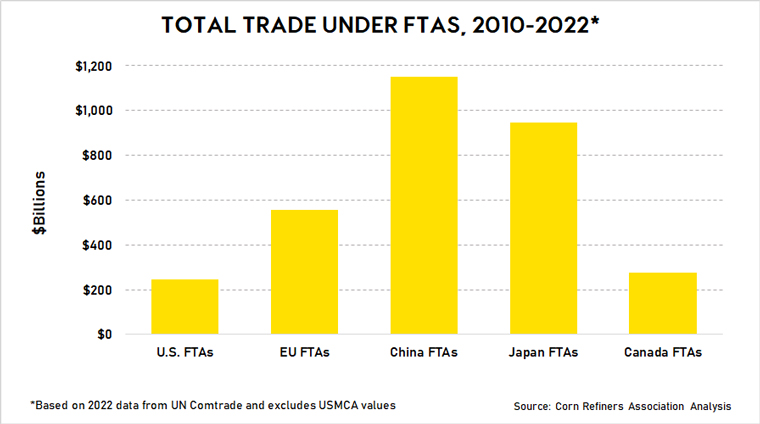Corn Refiners Welcome US, China Trade Action, Urge Further Progress
May 12, 2025 WASHINGTON, D.C. – Corn Refiners Association President and CEO John Bode released a statement… Read More...
As a leading trading nation and the world’s largest economy, the U.S. has consistently pursued opportunities to expand trade since the mid-20th century. This is done to contribute to national economic prosperity and promote economic development and peace abroad. With over 95% of consumers residing outside of the U.S., trade liberalization and access to foreign markets through the pursuit of trade agreements remains vital to the economic fortunes of U.S. workers, consumers, and industries. In an increasingly interconnected global economy where other major trading nations are liberalizing trade to promote economic prosperity and competitiveness, the U.S. must have trade policies that further reduce global trade barriers.
Unfortunately, the U.S. has fallen into an observer role when it comes to trade agreements allowing our trade rivals to define the path of global trade rules, standards, and practices.
Since 2010, several leading trading nations have surpassed the U.S. in setting the terms of global trade by activating new free trade agreements.

In comparison, the U.S., #3 in international trade, has had just four new trade agreements enter into force. The most significant is USMCA, a “modernization” of its 25-year-old predecessor, the North American Free Trade Agreement (NAFTA). The other U.S. trade agreements are with Colombia, Panama, and South Korea.
Beyond the sheer number of new trade agreements, several key U.S. trade partners are outpacing the U.S. in their level of trade covered by a trade agreement. These countries are benefiting from lower tariffs and reductions in non-tariff barriers contained in their formal trade agreements.

In the vast majority of trade agreements, existing tariffs for 98-99% of goods traded between the partners are eliminated immediately or within ten years.
Read CRA’s full analysis of the trade landscape in the report “Trade Agreements and U.S. Competitiveness – 2023 Update.”
